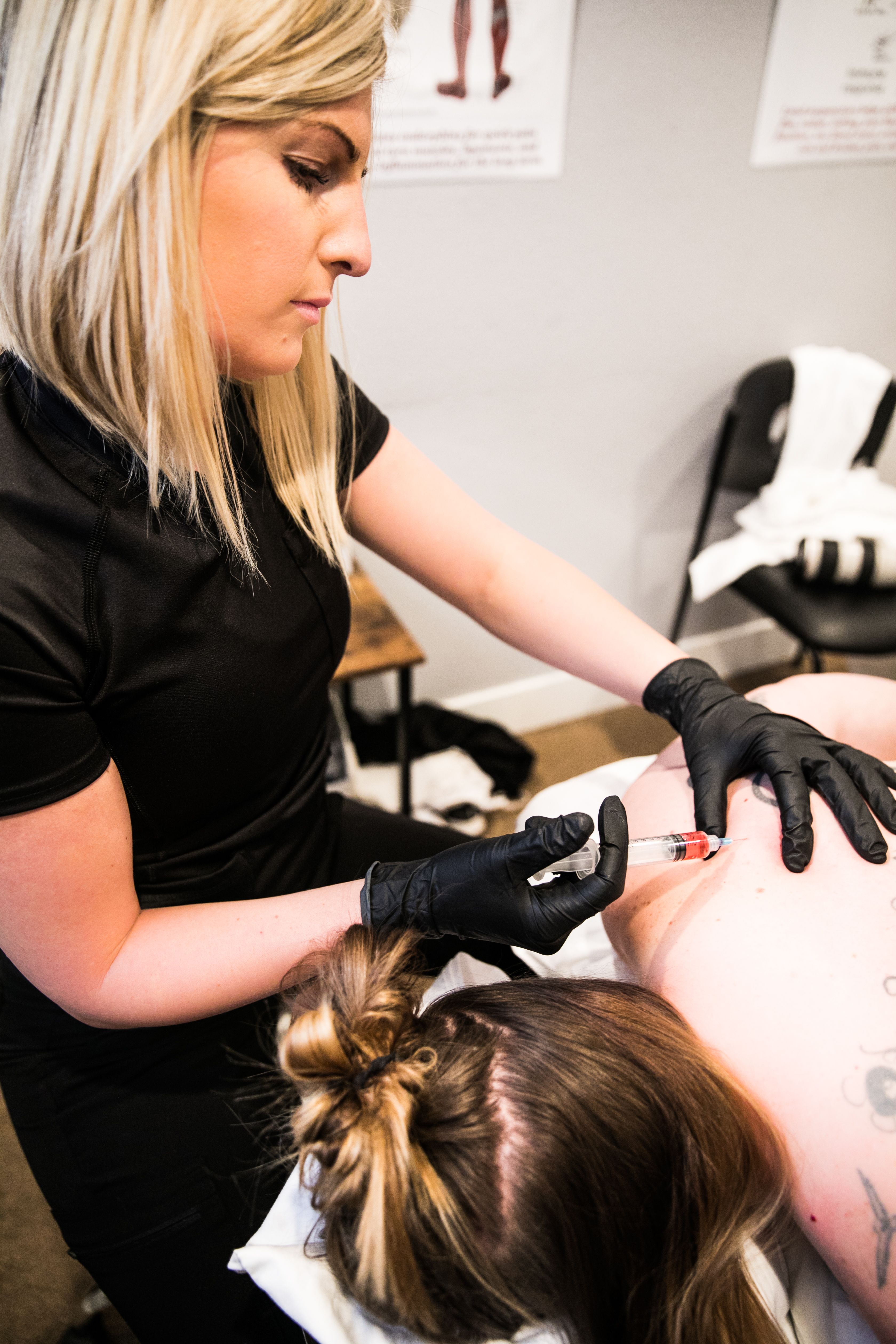
Trigger Point injections
Trigger Point injections are great for people who have tried Dry Needling and want an extra boost to their treatment. Imagine a super Dry Needling (called wet needling!) treatment. Trigger point injections can be used to treat tight muscles, muscle knots, and trigger points. We typically use one or a combination of the following:
Saline bacteriostatic 0.9% sodium chloride, lidocaine 1%, methylcobalamin B12, and Traumeel (anti-inflammatory herbal formula)
These injections help to hydrate the muscle, help with pain, decrease nerve inflammation, and decrease several inflammatory cytokines. It is generally recommended to come in for trigger point injections once to twice weekly for at least two weeks in a row. Then your practitioner will devise a prognosis and maintenance plan for you. If you have a job or do a sport or activity that involves repetitive motions of any sort, it is highly recommended to continue treatment ongoing at some maintenance level depending on how long your relief lasts for and how intense your activity is (could be once weekly ongoing, or could be as little as once every six weeks).
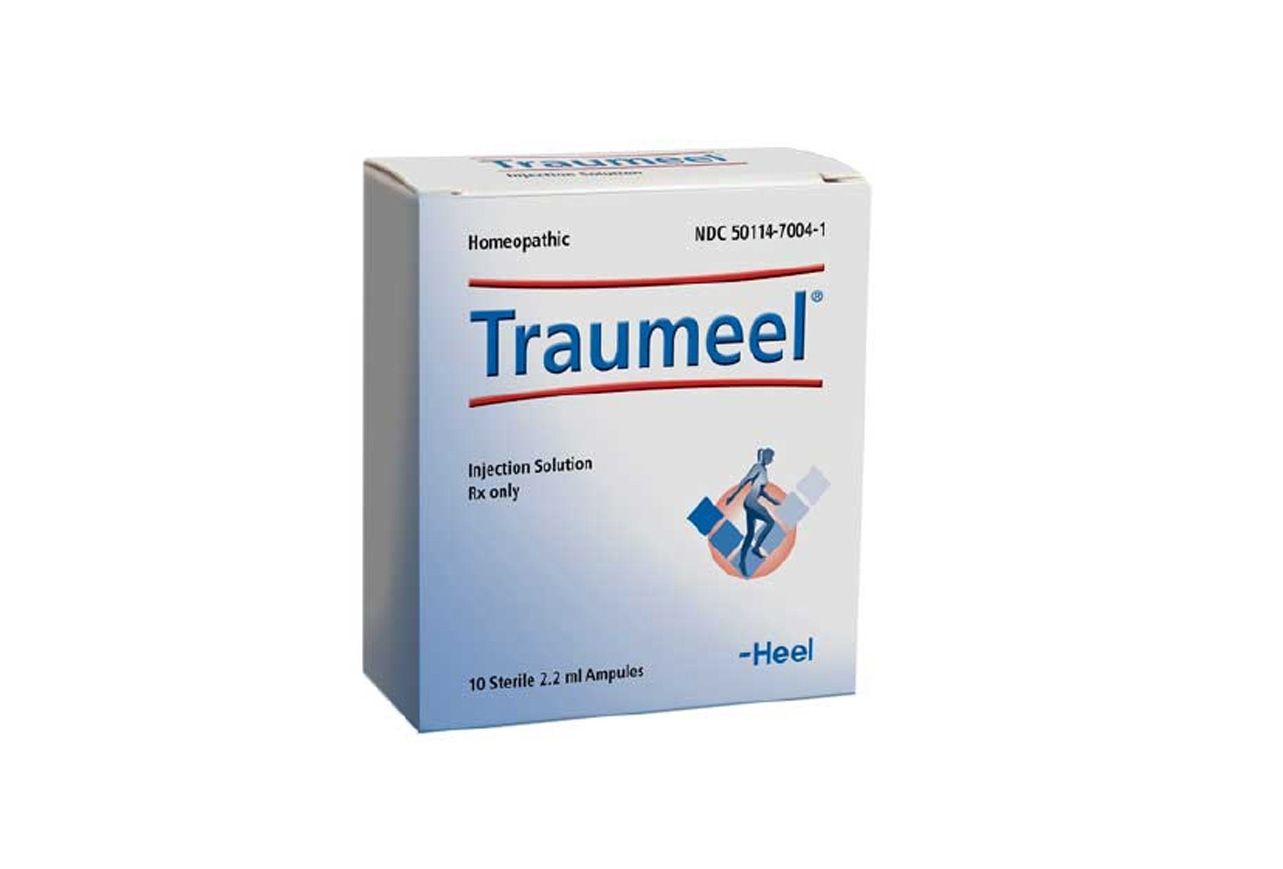
Traumeel for injuries
Traumeel® Injection Solution is an anti-inflammatory, analgesic, anti-edematous, anti-exudative combination formulation of 12 botanical ingredients, 1 mineral substance, and 1 animal-derived substance. Traumeel does not work on enzyme inhibition such as NSAID drugs do. Instead, Traumeel helps stimulate the immune system and reduces inflammatory mediators such as IL-1 and neuropeptides. In-vitro studies show that there is no toxicity to surrounding tissues, only oxygenation to reduce free radicals and a release of anti-inflammatory cells.
The anti-inflammatory, analgesic, anti-edematous, and anti exudative effects of Traumeel® Injection Solution have been demonstrated in clinical trials as well as in-vivo experimental models including the carrageenin-induced edema test and the adjuvant arthritis test.
|
Mountain Arnica |
Significant analgesic and anxiolytic activity. Rich in flavonoids and phenolic acids. Antioxidant activity and protection of oxidative stress. Upregulates genes that help macrophages remodel/regenerate connective tissue |
|
Marigold (Calendula) |
The richest and purest form of Lutein. Anti Inflammatory, analgesic, and antioxidant. Wound healing by increasing platelet and white blood cell count. Increase hemoglobin count, and reduce bleeding time by increasing clotting ability when there is an injury. |
|
Witch Hazel |
Used for pain and swelling. Especially for mucous membrane inflammation, decreased blood flow, bruising |
|
Yarrow (Shi Cao) |
It is an anti-inflammatory agent and is a hepatoprotective herb. The study confirms the antiphlogistic activity and anti-inflammatory effects were partially mediated by the suppression of the activation of transcription factor NF0kB and p38 MAPK signaling cascade. It also showed good free radical scavenging activity and an ability to decrease the levels of intracellular ROS. |
|
Belladonna (nightshade) |
Pain reliever, muscle relaxer, and anti-inflammatory. |
|
Monkshood |
Studies show it helps to improve Neuropathic pain |
|
Chamomile |
Reduces pain from the flavonoid called apigenin which acts as an anti-inflammatory |
|
Comfrey |
Contains allantoin which boosts the growth of new skin cells after injury. Also contains Phenolic acids including rosmarinic acid which relieves pain and inflammation. Research has shown an antioxidant effect and decreased healing time after a broken bone. Studies show a decrease in inflammatory molecules IL-1 and NF-kB |
|
Daisy |
Helpful for injuries and bruises, especially those caused by trauma to the trunk or in deeper tissues—for example, internal soreness after an accident or surgery. Great for bruised or injured areas. |
|
Echinacea |
Contains caffeic acid, alkamides, phenolic acids, rosmarinic acid, and polyacetylenes. It reduces inflammation, improves immunity, and has antioxidant properties. Research showed that when patients who did not respond well to NSAIDs for pain, responded better to Echinacea. |
|
St. John's Wort |
Active ingredients include hypericin, hyperforin, and adhyperforin which help keep serotonin, GABA, dopamine, and norepinephrine in the system. It helps reduce pain in people who have an increased sensitivity to pain. |
|
Hahnemann's soluble mercury |
For the temporary relief of fatigue |
|
calcium sulfide-made from oyster shells |
Contains Vitamins B1, B2, B3, B5, B12, and is high in calcium |
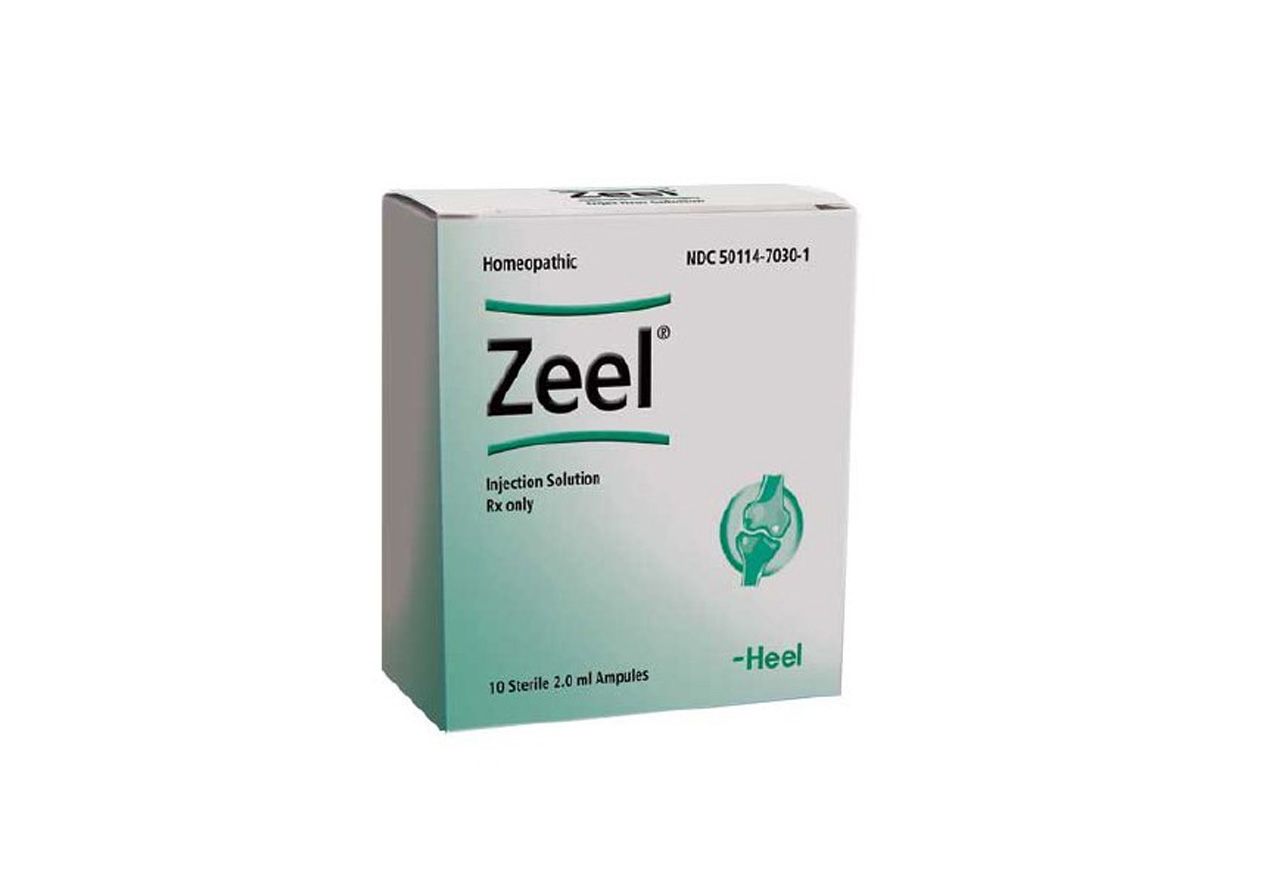
Zeel for Joint Pain
- a-Lipoicum acidum
- Arnica montana, radix
- Cartilago suis
- Coenzyme A
- Dulcamara
- Embryo totalis suis
- Funiculus umbilicalis suis
- Nadidum
- Natrum oxalaceticum
- Placenta suis
- Rhus toxicodendron
- Sanguinaria canadensis
- Sulphur
- Symphytum officinale
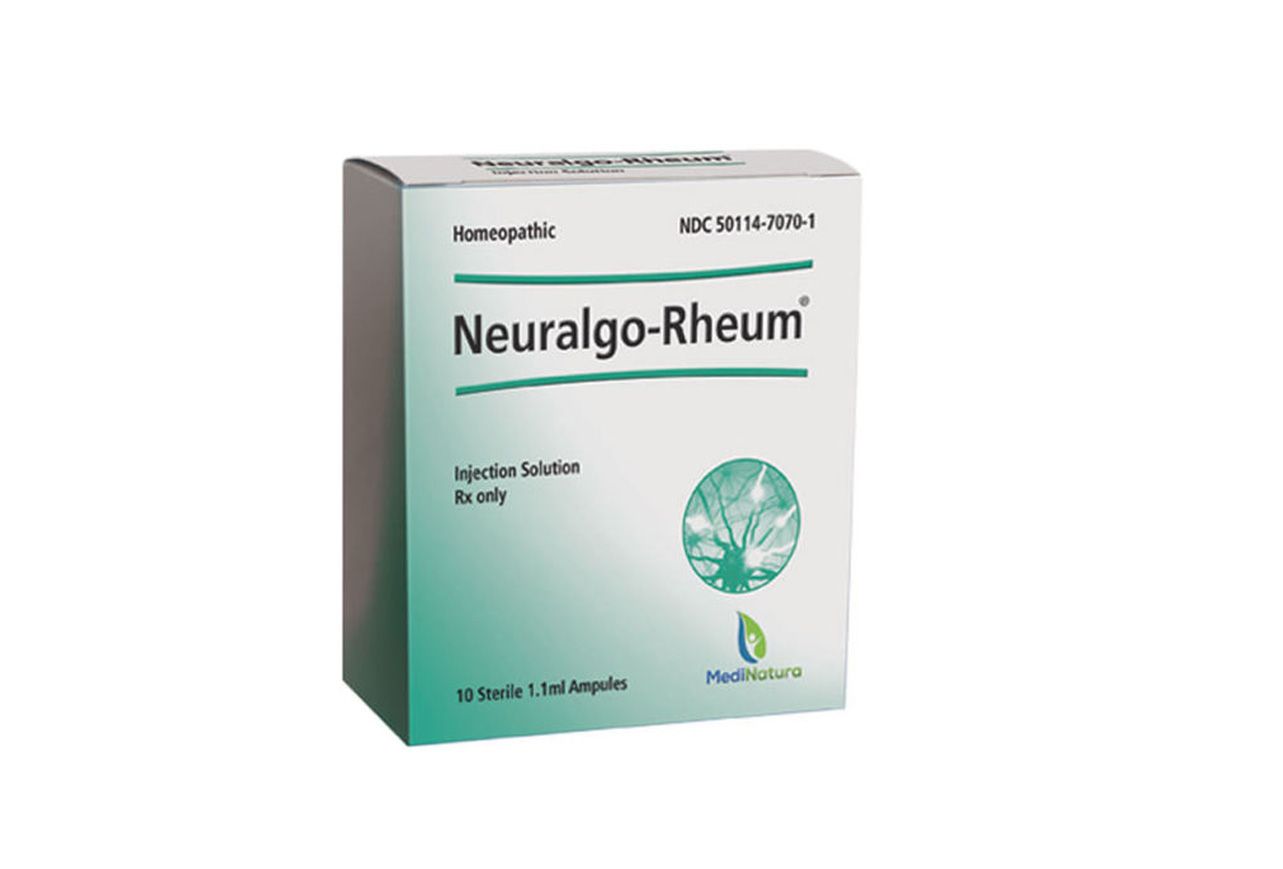
Neuralgo-Rheum for Nerve Pain
- Causticum
- Colchicum autumnale
- Colocynthis
- Ferrum metallicum
- Gnaphalium polycephalum
- Lithium benzoicum
- Rhus toxicodendron
- Spiraea ulmaria
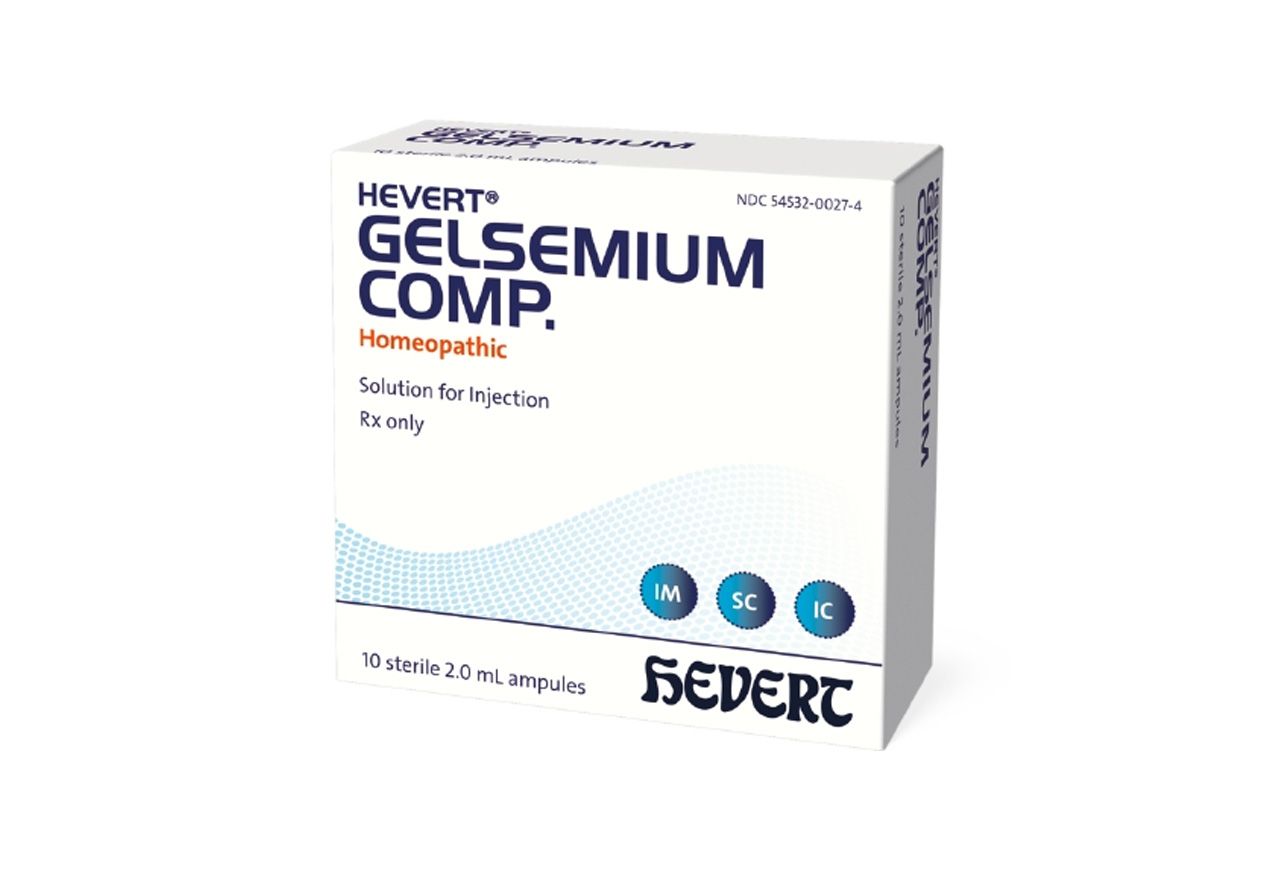
Gelsemium Comp
- Aconitum napellus
- Cocculus indicus
- Colocynthis
- Gelsemium sempervirens
- Lachesis mutus
- Mezereum
- Nux vomica
- Plumbum aceticum
- Rhus toxicodendron

Calmvalera Comp for Sleep and Anxiety
- Cimicifuga racemosa
- Cocculus indicus
- Cypripedium pubescens
- Ignatia amara
- Passiflora incarnata
- Platinum metallicum
- Valeriana officinalis
- Zincum valerianicum
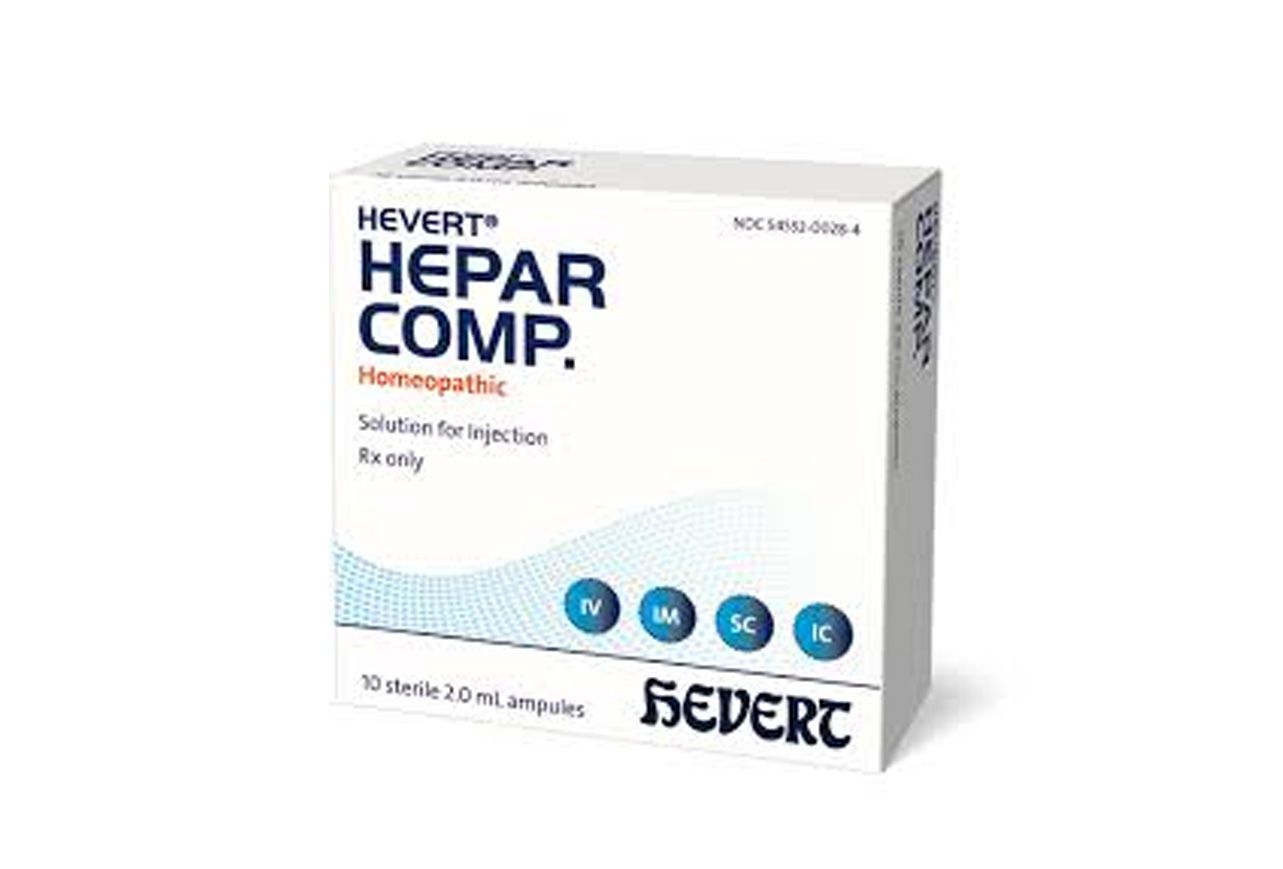
Hepar Comp for Liver Problems
- Carduus marianus
- Chelidonium majus, radix
- Quassia
- Taraxacum officinale